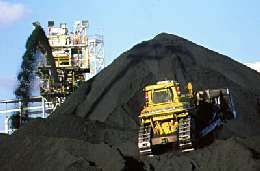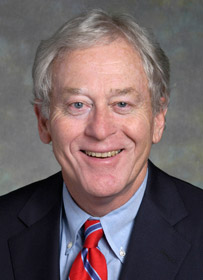IGCC taking some twisted turns…
August 11th, 2010
There’s been change afoot as the facts of the infeasibility of CO2 capture and storage filters up to the higher regions of the cesspool, and as the financing nightmares and high capital costs of IGCC are paraded in public as the Indiana Duke IGCC project moves forward, and as, of course, the DOE’s EIS (here’s the DOE’s project page) for Excelsior Energy’s Mesaba Project drags on and on and on as the agency refuses, thankfully, to issue the Record of Decision on that… and slowly, painfully slowly, the truth about this IGCC pipedream is coming out.
A few telling tidbits, first, that they’ve given up on FutureGen IGCC, YEAAAAAAAAA:
DOE to provide $1B to revamped FutureGen
This study was released last June, which shows that leakage of CO2 is a major problem, and which makes sequestration not feasible:
Long-term Effectiveness and Consequences of Carbon Dioxide Sequestration – Shaffer
Can’t have information like that getting out, so USA Today, of course, plays it with the following headline — DUH, of course critics pan the study — and this is the best they could come up with and it took two months!
Critics question carbon storage study
Byron Starns on both sides of the fence
July 6th, 2010
I’ve just by utter accident discovered a few things…
We all remember Byron Starns, attorney for Excelsior Energy’s Mesaba Project, the coal gasification project from hell. Check his bio – CLICK HERE – he’s done some amazing things, that Reserve Mining case in particular.
Now let’s take a walk back on memory lane, the 2003 Prairie Island bill, where the “Environmental Coalition”, i.e., Izaak Walton League, MCEA, ME3/Fresh Energy, and Xcel and Tom Micheletti did a deal that advance wind some, let Xcel continue using Prairie Island and increased cask storage, and opened the door for Micheletti’s Excelsior Energy and their IGCC plant that they’d been promoting since the 2002 session. On one hand, the “Environmental Coalition” including MCEA, in the middle we have Xcel, and on the other we have Tom Micheletti and Excelsior Energy…
Here’s the 2003 Prairie Island bill:
Minnesota Session Laws 2003 – 1st Special Session, Chapter 11
Here’s what it did for Mesaba (as if calling burning garbage “renewable” wasn’t enough):
Excelsior Energy Mesaba Project related parts of 2003 Chapter 11
When the Power Purchase Agreements for Excelsior Energy’s Mesaba Project came up at the PUC, MCEA intervened, both as a party and representing others:
To look at the full docket, go to www.puc.state.mn.us and “Search Dockets” and search for PPA docket “05-1993” and Siting docket “06-668.”
And look who filed a Notice of Appearance for Excelsior Energy dated April 27, 2006:
And representing Excelsior Energy in the Siting Docket dated September 26, 2006:
And look who is noted in the MCEA Annual Reports as providing legal services to MCEA in 2005 and 2006, look in the fine print, why it’s Byron Starns!
Oh, but that’s not all, look who joins the Board of MCEA in 2007 … and remains through 2008… and 2009 according to his bio on the LSD site — why, it’s Byron Starns again!:
Board of Directors, Minnesota Center for Environmental Advocacy, 2007–2009 (linked)
His bio states he was on the MCEA board in 2009, but the 2009 IRS 990 does not list him as having been on it at reporting year end.
I just spoke with Byron Starns, who, with the forwarning to don his Kevlar vest, was kind enough to entertain a few questions, and said that (close to quotes but not quite):
MCEA has an ethical requirement, that everyone on the Board must make full disclosure of interests and conflicts, and that when issues do come up, anyone with a conflict has to leave the room. He said he didn’t participate in any decisions related to energy matters for MCEA. He does not recall if the fact that he was on MCEA’s board was disclosed in the Excelsior Energy Mesaba Project PPA or Siting dockets. Also, he noted he is no longer on the Board of MCEA.
I don’t recall any disclosure about this — do you?
Is it “not a conflict” because MCEA’s interests and the interests of their “clients” the Waltons and Fresh Energy are so closely aligned with those of Excelsior Energy because of that 2003 agreement?
The IGCC pipedream continues to fizzle
June 16th, 2010
A little birdie has been looking around at Mesaba — but first…
Here’s a report of an obvious problem with IGCC from John Blair, Valley Watch— the pipedream is just that, and the truth that those of us in the midst of coal gasification know too well is finally coming out publicly:
Carbon capture plans failing – IEA
“Much greater effort will be needed to meet future deployment levels,” it said.
Meanwhile, the little birdie… We’ve been in this odd and unenviable place, a big horrible coal gasification plant, the Mesaba Project, promoted by Excelsior Energy, a shell corp with nada for assets, which demanded a Power Purchase Agreement then denied by the PUC, and yet inexplicably granted a siting permit for not just “one” but TWO projects totalling over 1,000MW of IGCC! OH… MY… DOG! So it’s in limbo land, and we’re wondering how on earth this thing stays on life support as it rots away…
The little birdie had this report:
Excelsior Energy was supposed to have filed a new air permit, and the MPCA was supposed to have reviewed the 2006 air permit application “to assure that the protocol was acceptable to federal land managers.” Well, that didn’t happen, the “review” by MPCA OR the filing of the new air permit, which was supposed to have been filed last week.
… and the little birdie while looking around found this in their “Frequently Asked Questions” on their site, then scroll down to “View common transmission misconceptions” to p. 2:
Myth: The Mesaba Project will force wind energy off from the transmission grid.
Hmmmmmmmmm…
And this “Myth” section is a lot like their letter to Commerce regarding EIS Scoping Comments:
Anyway, I’d like to see this blog posting they’re referring to! Misinterpreted? Naaaaaaah, it’s all the interpretations of those presenting and reviewing at the MAPP meeting. Their claims are sorta like the matter of using a site with existing infrastructure:
I wonder what it was that blew their dress up… could it be:
So now it’s deliverable??? SWAG! January 9th, 2007
They caaalll Mesaaaba liiiars… November 25th, 2006
It’s all about this study — READ IT FOR YOURSELF:
Anyway, their air permit application was submitted, and it is a mess. The rules have changed. We’re waiting for the next Air Permit application, which will be… when???
Mesaba Project appellate decision
May 18th, 2010
It’s out, and although the court rejected the arguments of Excelsior Energy saying they didn’t get enough out of the PUC, and rejected the arguments of Minnesota Power and Xcel Energy, the bottom line is that the Public Utilities Commission won, their Order stands, and so in a small way, Excelsior Energy has “won.”
There were three issues before the court:
I. Did the commission err in determining that the Mesaba project is an IEP under Minn. Stat. § 216B.1694, subd. 1?
II. Does Minn. Stat. § 216B.1694, subd. 2(a)(7), require the commission to undertake its traditional public-interest evaluation?
III. Was the commission’s application of the IEP statute to Excelsior’s PPA arbitrary and capricious or unsupported by substantial evidence?
Bottom line?
We defer to the commission’s expertise as to the definition of the technical term ―traditional technologies.‖ The commission’s decision that the Mesaba project is an IEP is supported by substantial evidence.
The commission has the statutory authority to consider the public interest in evaluating the terms and conditions of an IEP’s PPA. Its decisions in this regard are supported by substantial record evidence and are not arbitrary and capricious. Accordingly, the commission did not err in concluding that Excelsior’s proposed power-purchase agreement with Xcel is not in the public interest under Minn. Stat. § 216B.1694, subd. 2(a)(7).
Here’s the full decision, issued today at 10:00 a.m.
May 18, 2010 Excelsior Energy-Mesaba Project Appellate Decision
Tomorrow – Excelsior Energy Appellate Decision
May 17th, 2010
Word is out – tomorrow we’ll know whether the Appellate Court thinks that Excelsior Energy qualifies as an Innovative Energy Project under Minnesota statutes. Stay tuned…


